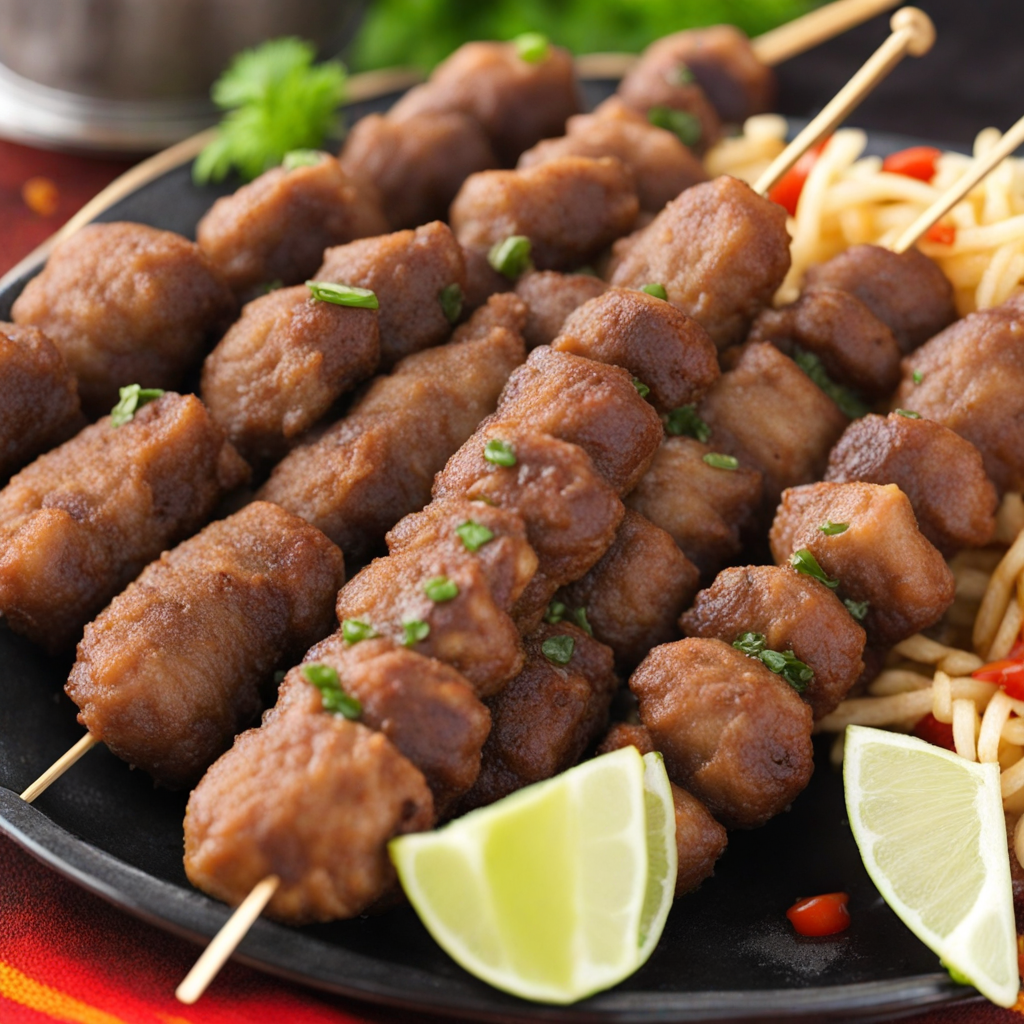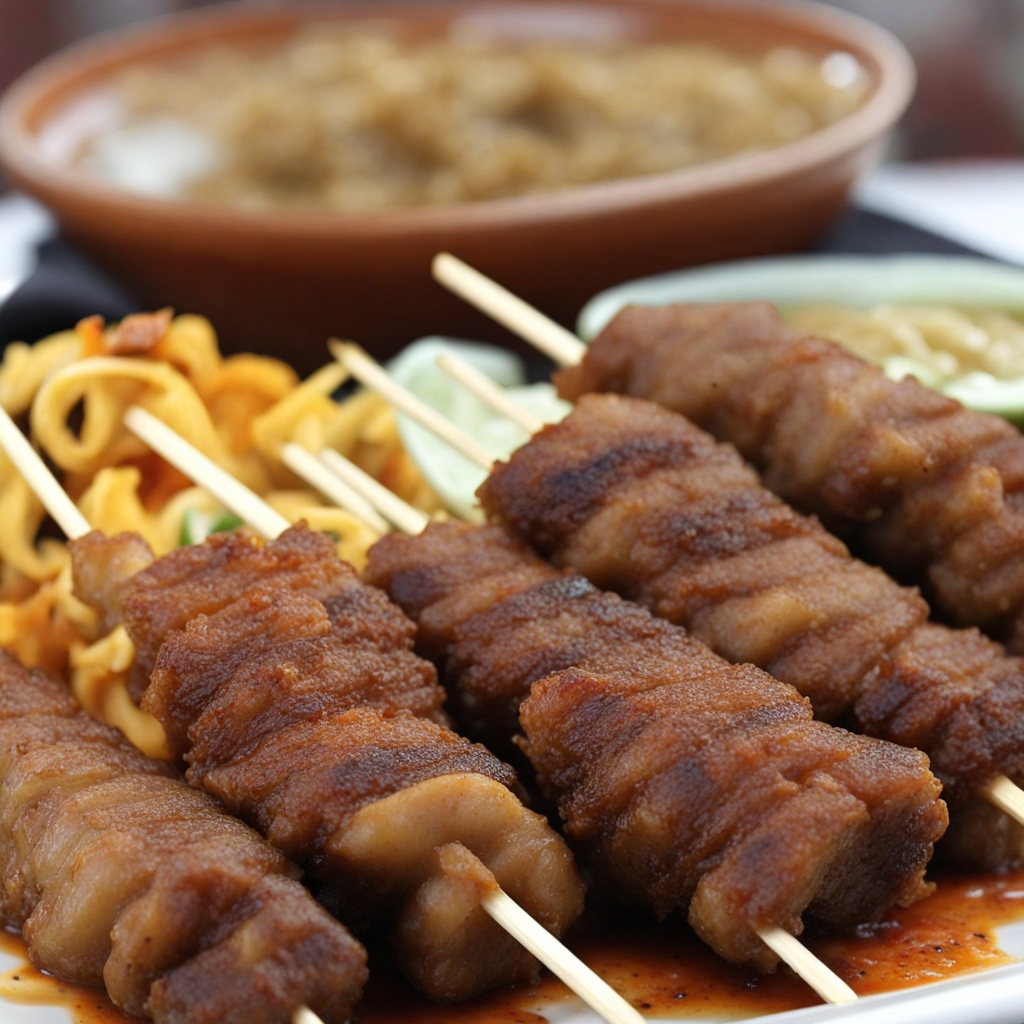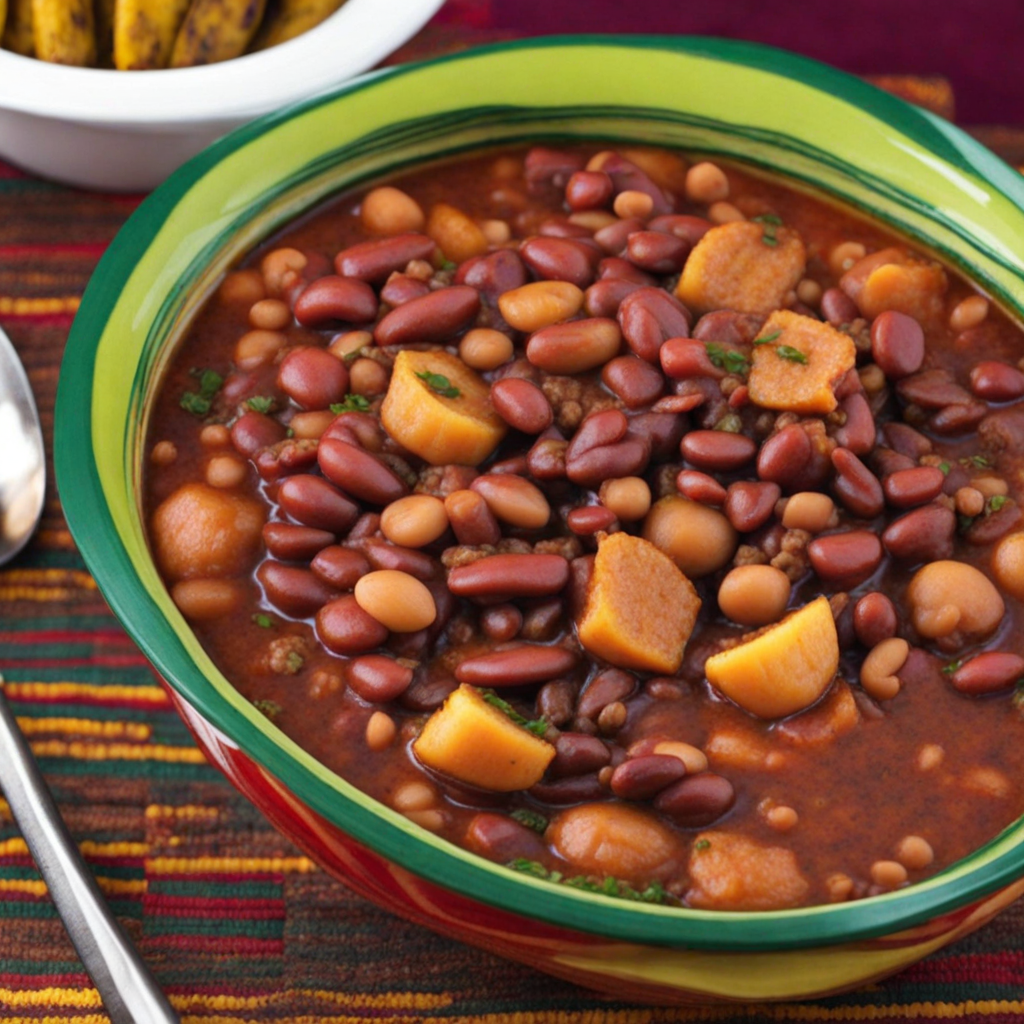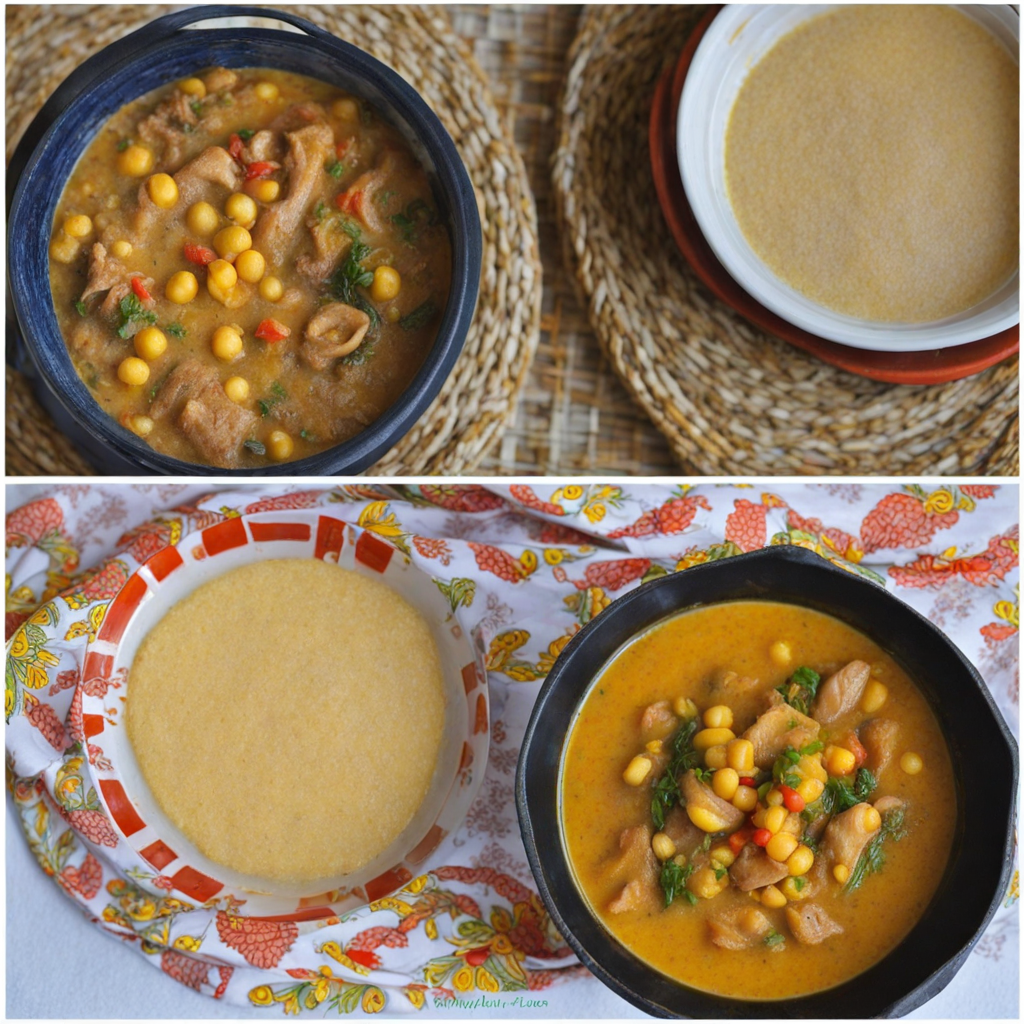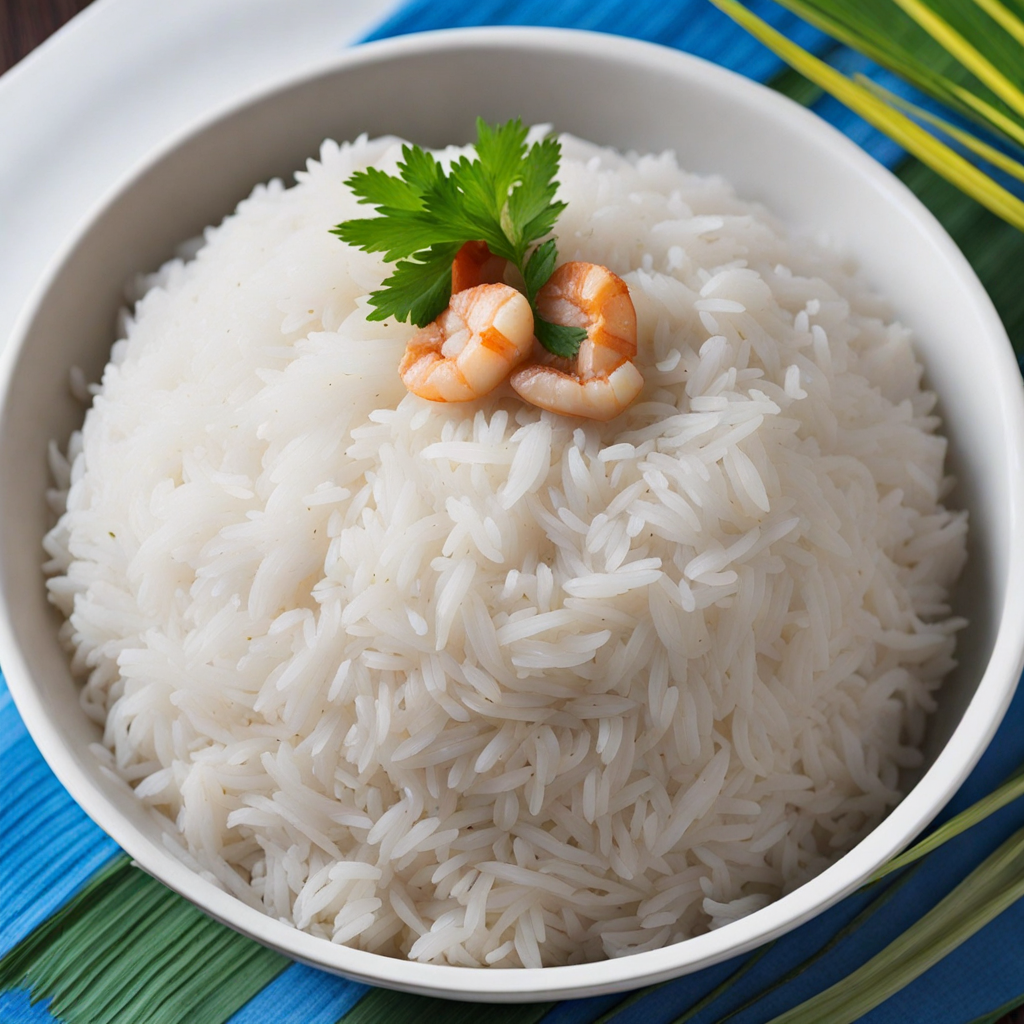Khebab
Khebab, a delightful street food from Ghana, showcases the vibrant flavors and culinary traditions of West Africa. This dish typically features skewered and grilled meat, marinated in a blend of spices that may include ginger, garlic, and a variety of local chili peppers, giving it a tantalizing kick. The meat, often chicken, beef, or lamb, is cubed and threaded onto skewers, allowing the smoky aroma of the grill to permeate each piece. The combination of spices and the grilling process creates a tantalizing crust that locks in the moisture, resulting in tender and juicy bites of meat that are bursting with flavor. Accompanying the Khebab are various sides that enhance the overall experience. Traditional Ghanaian accompaniments may include spicy pepper sauce, known as shito, which adds a rich depth of flavor and heat, as well as sides like fried plantains or jollof rice. These additions not only complement the savory meat but also provide a satisfying balance of textures and tastes. The vibrant colors of the dish, with the charred meat against the backdrop of fresh vegetables and sauces, make it not only a feast for the palate but also a visual delight. Whether enjoyed as a quick snack on the streets or as part of a larger meal, Khebab embodies the essence of Ghanaian cuisine—bold, flavorful, and communal. It’s often shared among friends and family, making it a perfect dish for gatherings and celebrations. Each bite transports you to the bustling markets of Ghana, where the aroma of grilled meats mingles with the sounds of lively conversation, offering a delicious glimpse into the rich culinary heritage of the region.
How It Became This Dish
The History of Khebab in Ghana Khebab, a beloved street food in Ghana, is often celebrated for its tantalizing flavors and social significance. This delectable dish, which comprises skewered and grilled meat, has a rich history that intertwines with Ghana's diverse cultural fabric, reflecting the nation’s culinary evolution and its social customs. #### Origins The origins of khebab can be traced back to ancient culinary traditions that spread across various cultures in West Africa. The word "khebab" is derived from the Arabic "kebab," which refers to a dish of grilled meat. It is believed that the introduction of kebabs to the region occurred through trade routes that connected the Middle East and North Africa with Sub-Saharan Africa. As Arab traders traversed these routes, they brought with them not just goods, but also culinary practices, including the art of grilling meats on skewers. In Ghana, khebab has evolved to incorporate local flavors and spices, creating a unique version that reflects the nation’s agricultural bounty and culinary creativity. The use of marinated meats, often seasoned with local spices such as ginger, garlic, and pepper, gives Ghanaian khebab its distinctive taste, setting it apart from its Middle Eastern counterparts. #### Cultural Significance Khebab is more than just a meal; it occupies a prominent place in Ghanaian culture. It is a food of the people, enjoyed across various social strata and at diverse occasions. Street vendors often sell khebab in bustling markets and along busy streets, where the aroma of grilling meat entices passersby. This accessibility makes khebab a popular choice for both locals and visitors, serving as a culinary ambassador of Ghanaian street food culture. Khebab is often consumed during social gatherings, celebrations, and festivals, symbolizing hospitality and community. Whether at a lively wedding reception, a family reunion, or a local festival, khebab fosters connections among people. Sharing a meal of khebab often leads to laughter, storytelling, and the forging of bonds, highlighting its role as a facilitator of social interaction. Moreover, khebab is sometimes prepared during important cultural ceremonies, such as naming ceremonies or festivals that celebrate the harvest. The act of grilling khebab becomes a communal affair, bringing together family and friends to participate in the cooking process. This communal aspect reinforces the importance of food in Ghanaian culture, where meals are often shared rather than eaten alone. #### Evolution Over Time Over the years, khebab in Ghana has undergone significant transformations, reflecting both globalization and local innovation. Initially, khebab was primarily made with beef or goat meat, marinated in a blend of spices and herbs. However, as Ghana became more interconnected with the world, various adaptations emerged. Today, khebab can be found in diverse forms, including chicken, fish, and even vegetarian options, catering to varying tastes and dietary preferences. The influence of international cuisine can also be seen in the way khebab is served. While traditional khebab is often enjoyed with spicy sauces or relishes, modern interpretations may include side dishes such as fried plantains, salads, or even sauces inspired by international flavors. This evolution showcases the adaptability of khebab as it continues to resonate with both traditional and contemporary palates. The rise of food trucks and modern restaurants has further popularized khebab, with gourmet versions appearing on menus across the country. Chefs experiment with fusion recipes, combining local spices with global techniques, creating dishes that honor the traditional while paving the way for innovation. This blending of culinary traditions reflects a broader trend in Ghanaian cuisine, where chefs seek to honor heritage while embracing creativity. #### Khebab and Globalization The globalization of food culture has introduced khebab to a wider audience beyond Ghana. As Ghanaians migrate and settle in different parts of the world, they bring their culinary traditions with them. Khebab has found its way into various diasporic communities, where it is often served at cultural events or gatherings. In this context, khebab serves not only as a comfort food but also as a means to maintain cultural identity and connection to home. Moreover, the international food scene has recognized the growing popularity of African cuisine, including Ghanaian dishes like khebab. Restaurants specializing in African cuisine have started to emerge globally, offering authentic khebab alongside other traditional dishes. As more people become aware of the diversity and richness of Ghanaian cuisine, khebab has the potential to become a staple in international dining. #### Conclusion Khebab in Ghana is a dish steeped in history and cultural significance. From its origins rooted in ancient trade to its evolution into a beloved street food, khebab reflects the spirit of Ghanaian culinary tradition. It serves as a bridge between past and present, connecting communities and fostering social bonds. As khebab continues to adapt and thrive in a globalized world, it remains a testament to the resilience of Ghanaian culture and its ability to embrace change while honoring its rich heritage. In a rapidly changing culinary landscape, khebab stands as a delicious reminder of the power of food to unite people, celebrate traditions, and create lasting memories. Its sizzling presence on the streets of Ghana, paired with the laughter and camaraderie of those who gather to enjoy it, ensures that khebab will continue to be a cherished symbol of Ghanaian culture for generations to come.
You may like
Discover local flavors from Ghana


